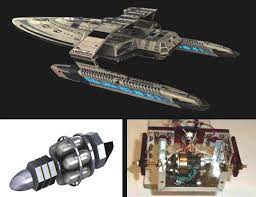
Breaking News
 Nancy Pelosi has officially announced her RETIREMENT at the end of her term, January 3, 2027.
Nancy Pelosi has officially announced her RETIREMENT at the end of her term, January 3, 2027.
 Omeed Malik: The Technocrat Muslim Billionaire Inside MAGA
Omeed Malik: The Technocrat Muslim Billionaire Inside MAGA
 Democrat-led government shutdown is now causing flight delays, threatening air traffic control,...
Democrat-led government shutdown is now causing flight delays, threatening air traffic control,...
Top Tech News
 HUGE 32kWh LiFePO4 DIY Battery w/ 628Ah Cells! 90 Minute Build
HUGE 32kWh LiFePO4 DIY Battery w/ 628Ah Cells! 90 Minute Build
 What Has Bitcoin Become 17 Years After Satoshi Nakamoto Published The Whitepaper?
What Has Bitcoin Become 17 Years After Satoshi Nakamoto Published The Whitepaper?
 Japan just injected artificial blood into a human. No blood type needed. No refrigeration.
Japan just injected artificial blood into a human. No blood type needed. No refrigeration.
 The 6 Best LLM Tools To Run Models Locally
The 6 Best LLM Tools To Run Models Locally
 Testing My First Sodium-Ion Solar Battery
Testing My First Sodium-Ion Solar Battery
 A man once paralyzed from the waist down now stands on his own, not with machines or wires,...
A man once paralyzed from the waist down now stands on his own, not with machines or wires,...
 Review: Thumb-sized thermal camera turns your phone into a smart tool
Review: Thumb-sized thermal camera turns your phone into a smart tool
 Army To Bring Nuclear Microreactors To Its Bases By 2028
Army To Bring Nuclear Microreactors To Its Bases By 2028
 Nissan Says It's On Track For Solid-State Batteries That Double EV Range By 2028
Nissan Says It's On Track For Solid-State Batteries That Double EV Range By 2028
Vacuum airship would work in thin atmosphere of Mars

This concept is similar to a standard balloon, whereas a balloon uses helium or hydrogen to displace air and provide lift, a vacuum airship uses a rigid structure to maintain a vacuum to displace air and provide lift.
A vacuum airship made of a homogenous material cannot withstand the atmospheric pressure on Earth for any material humans have yet discovered, which can be proven using the critical buckling load of a sphere. However, from an initial analysis of the vacuum airship structure and relationship to atmospheric conditions, Mars appears to have an atmosphere in which the operation of a vacuum airship would not only be possible, but beneficial over a conventional balloon or dirigible. In addition, a multi-layer approach, in conjunction with a lattice, would circumvent the buckling problems of a single homogenous shell. The lattice used to support the two layers of the vacuum airship shell can be made, using modulation of the lengths of the members, to fit the curvature of the vacuum airship precisely by following an atlas approach to the modulation.

 The Technocratic Dark State
The Technocratic Dark State Carbon based computers that run on iron
Carbon based computers that run on iron

